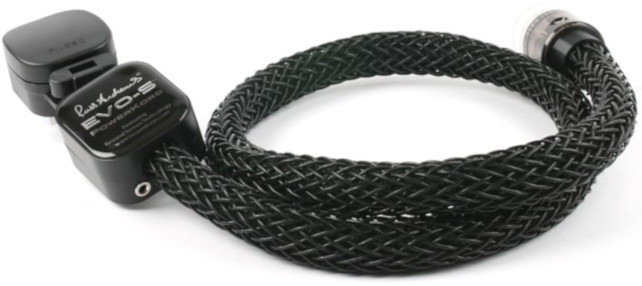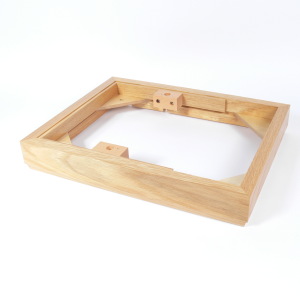NEW EVO-S PowerKords
Thursday, 16th June 2022
Our new PowerKord sees the integration of mains cables into the wider Russ Andrews Grounding System. John Armer investigates.

Some of the biggest performance gains we have had with our systems in the past few years have come from the introduction of our Grounding Products. Following the publication of our Grounding Guide in 2015 (see the latest edition here), Russ has been steadily improving and perfecting the technique – first, with the introduction of the Mark II RF Routers and followed by an increase in the number of termination options on the grounding wires to allow the connection of more components. Last year, we introduced SuperRouter, which utilises higher-quality components and sophisticated circuitry to deliver even better performance.
Those of you familiar with it will know that Russ’s approach to grounding is to nominate one of your components – usually the preamp or your integrated amp – as a ‘ground hub’. You link the metal casework or chassis of your source components to this hub with our grounding cables, and then connect the hub to the RF Router MKII or SuperRouter, which in turn connects to ground – ideally via an earth rod buried outside, although the mains earth can also be used.
Since the Routers offer a very effective path to ground for noise, we’ve been looking at additional ways this noise reduction could be harnessed. We’re still recommending one connection from the preamp / integrated amp to the Router, and a second connection from your power amp to the Router if you have one. But SuperRouters have enough inputs to connect up to 24 cables, so what are the additional terminals for?
The answer is to allow all the benefits of our existing Grounding System to be extended to a mains cable design. The design of our existing Evolution PowerKords does not immediately allow a method for grounding the cable (as opposed to earthing, which is for electrical safety). Initial discussions led us to investigate ways in which an external screen could possibly be utilised to enhance the cable’s grounding.
A new type of screen
Any of you reading Russ’s publications over the years will know that, until now, we have avoided using screens on our power cables, and for good reason; typically, metallic screens act as an aerial for Radio Frequency Interference (RFI) and inject it directly into the mains earth on the cable.
The big advantage of using the woven Kimber Kable is that it rejects RFI naturally. Due to its woven design, Kimber Kable filters RFI conducted by a cable into the system – and importantly, it does this without the negative effects that employing a traditional screen can bring.

Our view on this remains exactly the same. Nevertheless, we tested whether a ‘floating screen’ - unconnected to the actual cable conductors – could be effectively connected to our Grounding System, and thereby enhance the natural RFI-rejecting properties of the Kimber Kable.
Many prototypes, and hours of listening later, we perfected a design of PowerKord – the EVO-S - which allowed us to connect the new Ground Screen to one of our SuperRouters, via a custom-designed interface on the cable.
Use one of our Technical Ground or Premium Technical Ground cables to connect the EVO-S PowerKord to the SuperRouter, providing a highly efficient path for noise to be drawn away from the Ground Screen.
And the result? It’s our best-performing PowerKord yet!
Shop EVO-S PowerKord
Written By John Armer






















